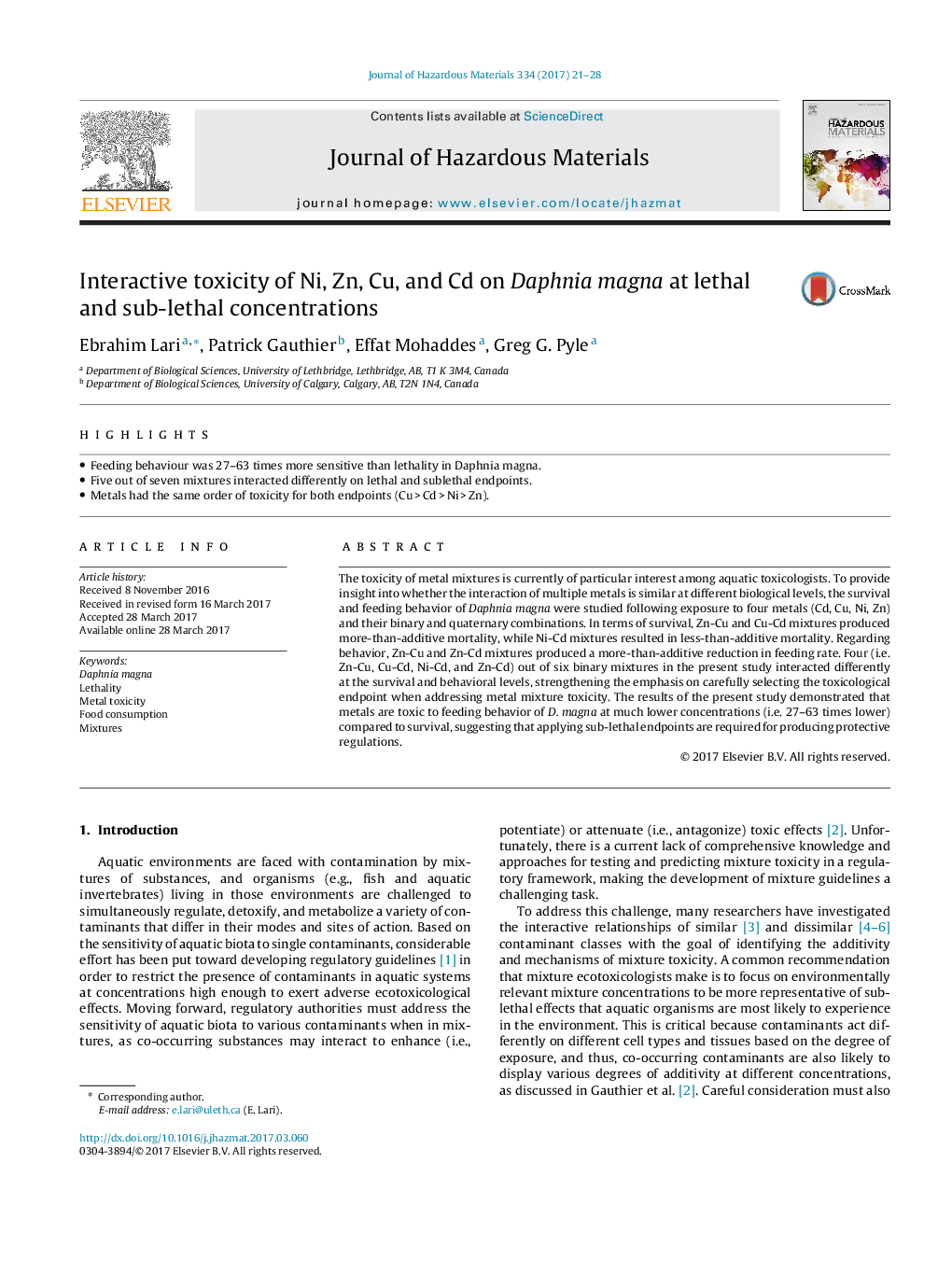| Article ID | Journal | Published Year | Pages | File Type |
|---|---|---|---|---|
| 4979576 | Journal of Hazardous Materials | 2017 | 8 Pages |
Abstract
The toxicity of metal mixtures is currently of particular interest among aquatic toxicologists. To provide insight into whether the interaction of multiple metals is similar at different biological levels, the survival and feeding behavior of Daphnia magna were studied following exposure to four metals (Cd, Cu, Ni, Zn) and their binary and quaternary combinations. In terms of survival, Zn-Cu and Cu-Cd mixtures produced more-than-additive mortality, while Ni-Cd mixtures resulted in less-than-additive mortality. Regarding behavior, Zn-Cu and Zn-Cd mixtures produced a more-than-additive reduction in feeding rate. Four (i.e. Zn-Cu, Cu-Cd, Ni-Cd, and Zn-Cd) out of six binary mixtures in the present study interacted differently at the survival and behavioral levels, strengthening the emphasis on carefully selecting the toxicological endpoint when addressing metal mixture toxicity. The results of the present study demonstrated that metals are toxic to feeding behavior of D. magna at much lower concentrations (i.e. 27-63 times lower) compared to survival, suggesting that applying sub-lethal endpoints are required for producing protective regulations.
Related Topics
Physical Sciences and Engineering
Chemical Engineering
Chemical Health and Safety
Authors
Ebrahim Lari, Patrick Gauthier, Effat Mohaddes, Greg G. Pyle,
